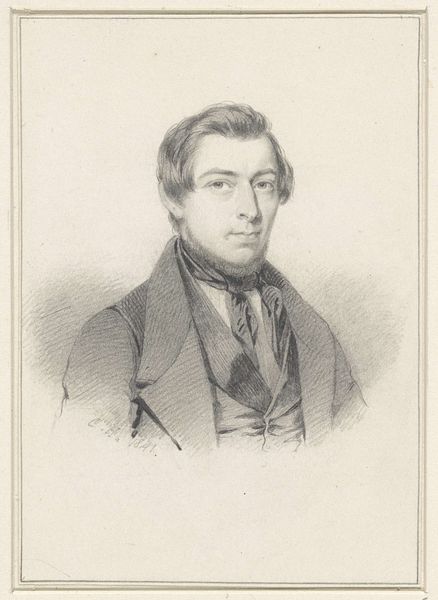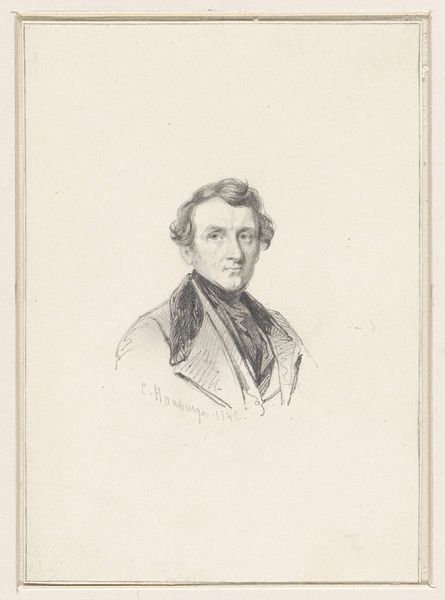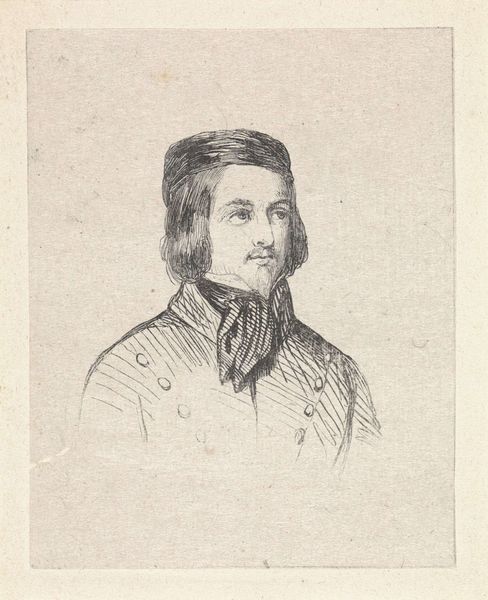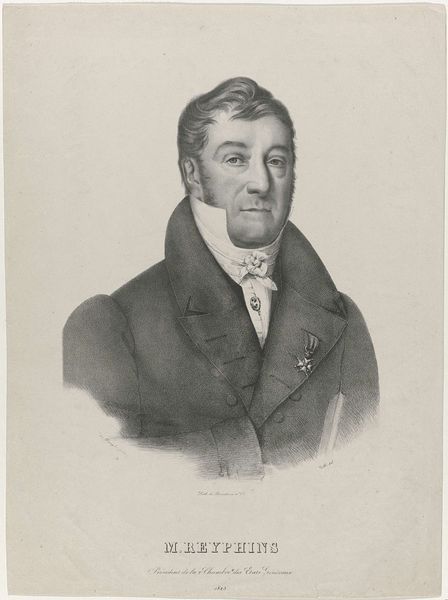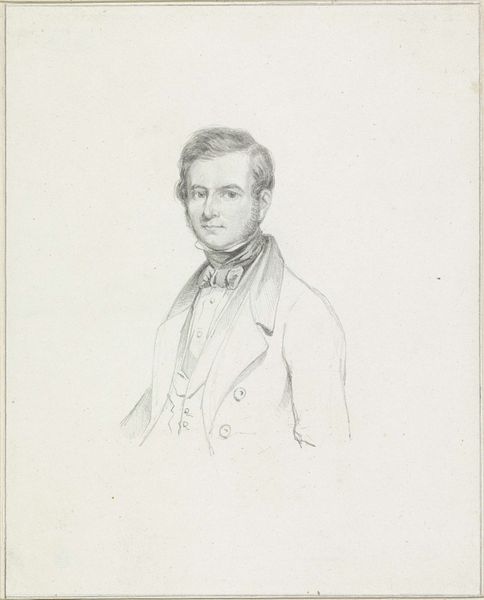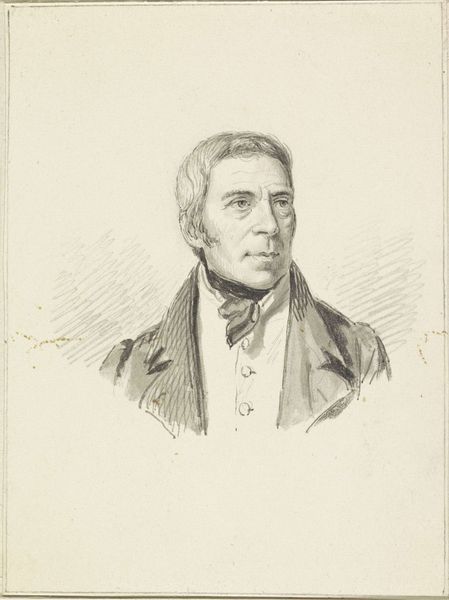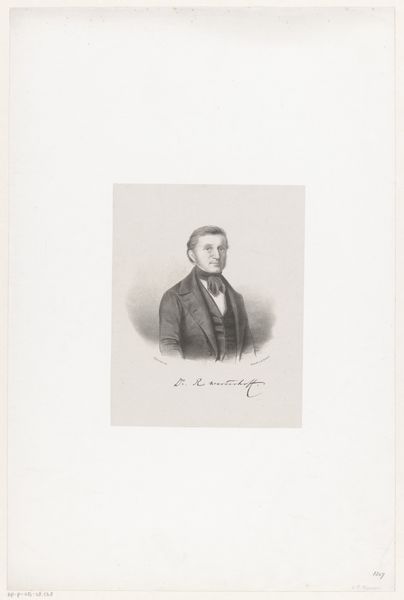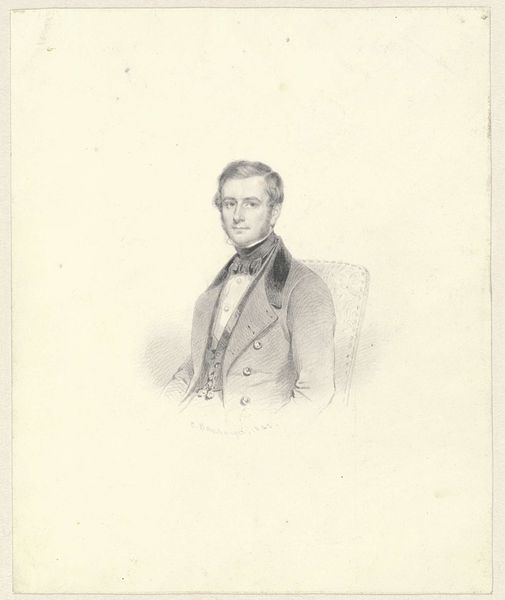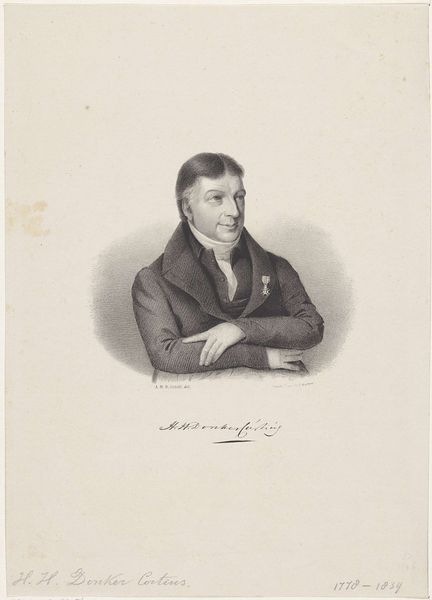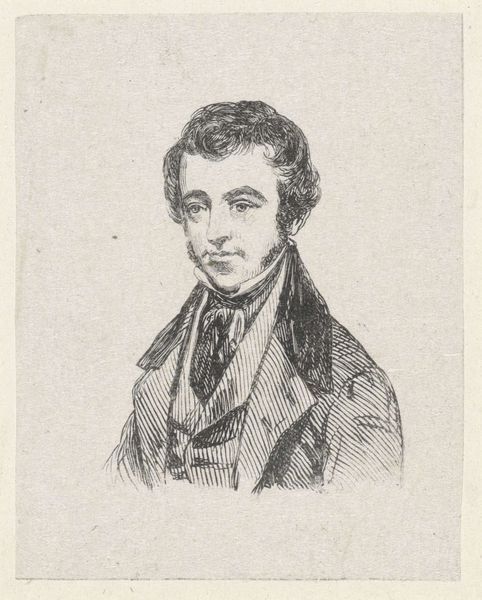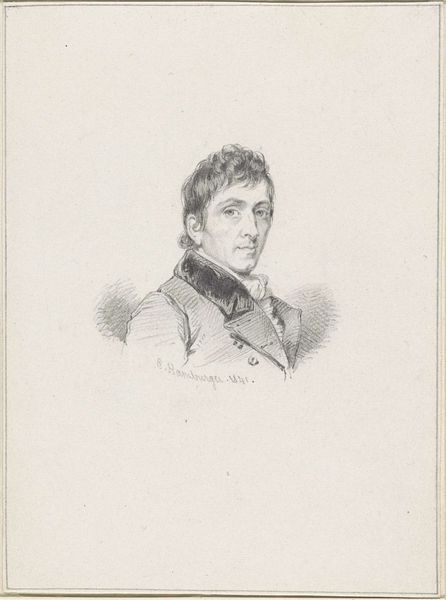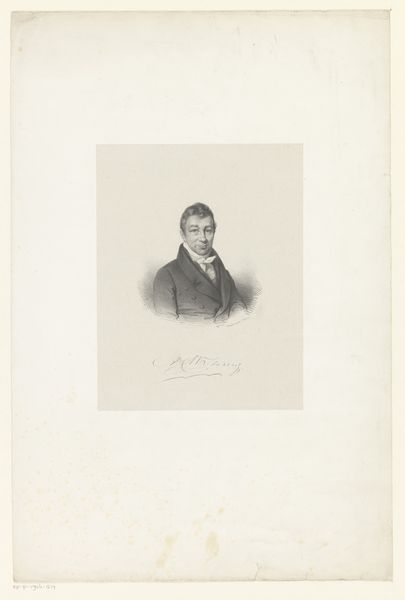
drawing, pencil
#
portrait
#
pencil drawn
#
drawing
#
self-portrait
#
pencil sketch
#
pencil drawing
#
romanticism
#
pencil
#
portrait drawing
Dimensions: height 128 mm, width 105 mm
Copyright: Rijks Museum: Open Domain
Curator: This is Édouard De Bièfve’s self-portrait, created sometime between 1830 and 1842. A rather subtle work done in pencil. Editor: It’s…delicate, almost hesitant. The fine lines of the pencil, the soft shading…there’s a gentleness to it, even if the subject appears somewhat stern. Curator: The Romantic period saw artists frequently turn inward, exploring the self and emotions. Self-portraits offered artists control over their own image, a declaration of their identity in a rapidly changing society, positioning the artist as a figure of importance in this new social order. Editor: The very act of sketching itself is interesting. It’s direct, immediate. You’re forced to consider the labor, the artist's hand and eye coordination to transfer an idea or image to paper with only a simple pencil. Were readily available graphite pencils common, then? Were there variations in quality that would impact the outcome of the portrait? Curator: Pencils became more widely accessible in the 19th century, impacting artistic practices. Their relative affordability also changed art education, fostering greater artistic participation beyond formal academies, expanding the sphere of artistic expression. The portrait became democratized! Editor: Looking closer, I’m struck by how skillfully he’s rendered the textures of the fabric of his clothing with just a pencil. The lapels, the soft collar—each line contributes to a sense of material reality, and simultaneously underscores the constraints and capabilities of working with pencils, as a medium of art. Curator: I am more drawn to how Bièfve has presented himself within a particular tradition. He projects a cultivated persona aligning with Romantic ideals, subtly positioning himself in a discourse about art and social identity. He wasn't just capturing a likeness; he was crafting a self-image for public consumption. Editor: Well, it is a fine portrait that, on closer examination, invites curiosity regarding artistic tools and its physical creation. Curator: A revealing work offering a nuanced view into Romanticism and the artist's evolving role.
Comments
No comments
Be the first to comment and join the conversation on the ultimate creative platform.
